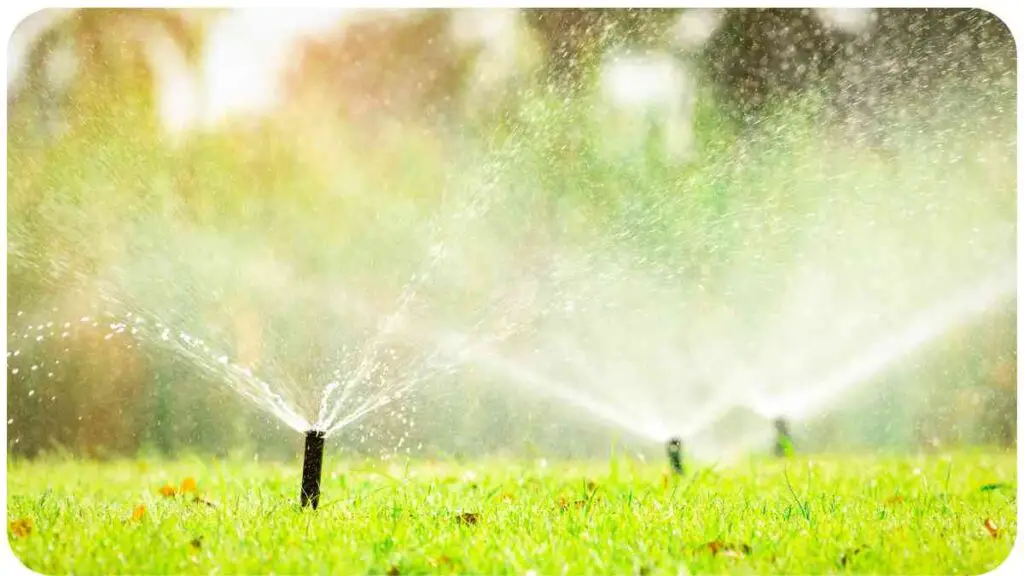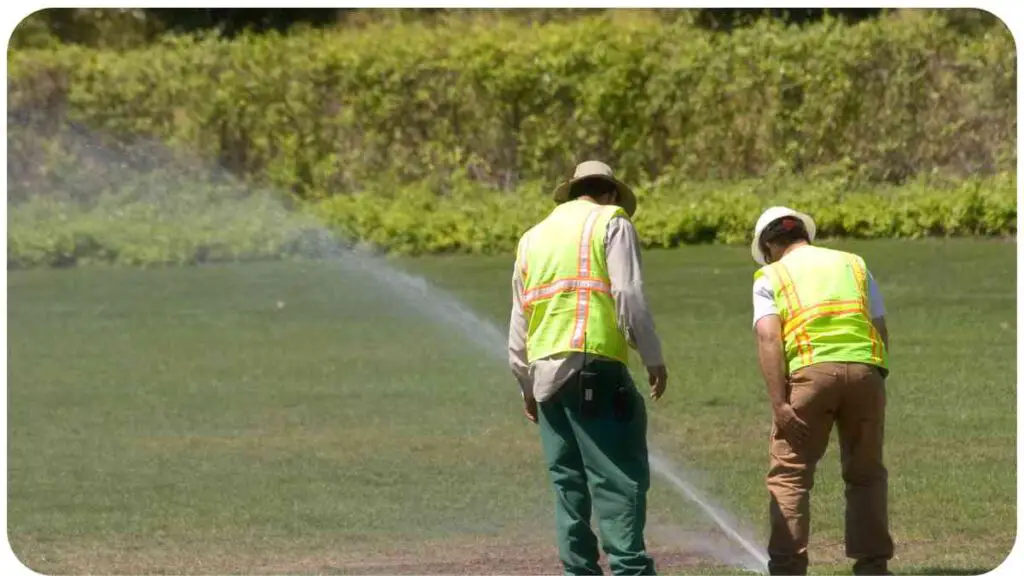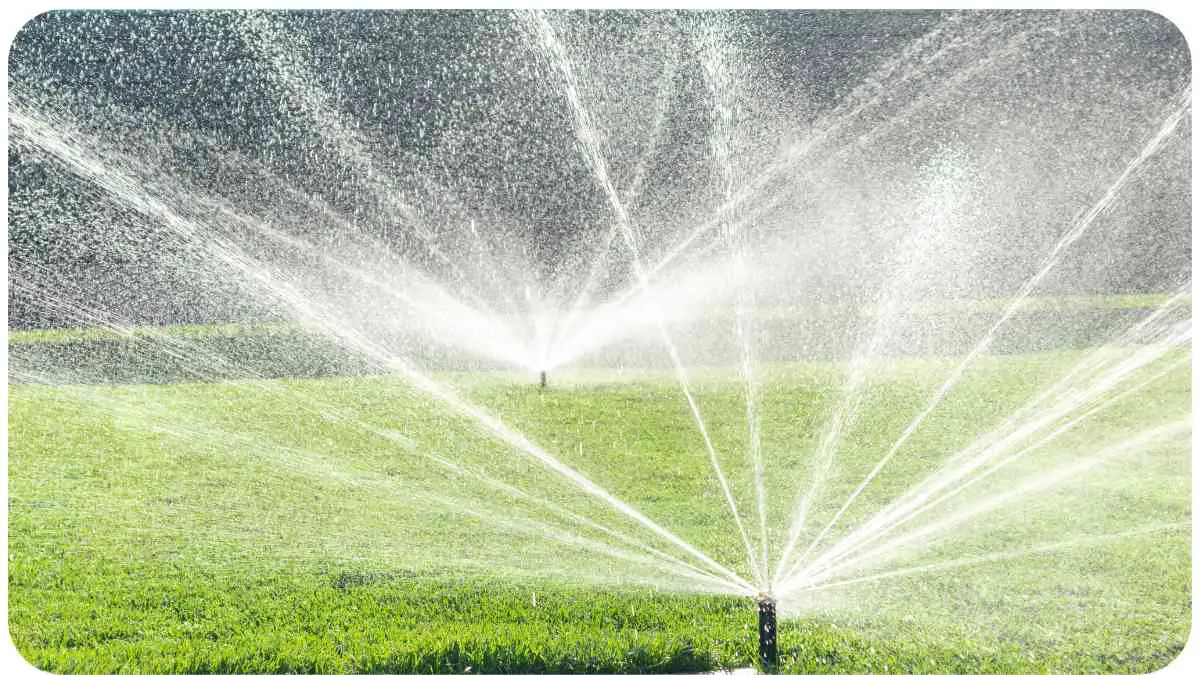Welcome to a comprehensive guide on troubleshooting automatic sprinkler systems. If you’re reading this, chances are you’ve encountered the frustrating situation of your sprinkler failing to activate when your lawn or garden desperately needs a drink.
Fear not, as we delve into the common culprits behind this issue and provide expert solutions to revive your system.
| Takeaways |
| 1. Regular maintenance is vital for your sprinkler system’s performance. |
| 2. Timely activation is crucial to prevent plant stress and maintain a healthy landscape. |
| 3. Common culprits for sprinkler failure include lack of maintenance, water supply issues, electrical problems, and sensor/controller failures. |
| 4. Troubleshooting steps, such as regular inspections, checking the water supply, and testing electrical components, can help identify and resolve issues. |
| 5. Expert tips include seasonal adjustments, soil inspection, and checking your drip system for optimal watering. |
| 6. Real-life case studies illustrate practical solutions to common sprinkler system problems. |
| 7. Preventative winterization helps protect your sprinkler system during the cold months. |
2. Understanding Automatic Sprinkler Systems
Before we dive into problem-solving, let’s establish a foundation. Automatic sprinkler systems are a homeowner’s best friend when it comes to maintaining a lush and healthy landscape. These systems are designed to water your green spaces efficiently and evenly, saving you time and effort compared to manual watering.
Elevate your garden with eco-friendly practices. Learn why sustainable landscaping is essential for a greener, healthier outdoor space.
3. Benefits of Automatic Sprinkler Systems

Automatic sprinklers offer numerous advantages, including:
- Consistency: They ensure consistent watering schedules, preventing under- or over-watering.
- Convenience: No more dragging hoses around or standing in the scorching sun; your system handles it for you.
- Water Savings: Efficiently targeted watering reduces water wastage.
- Healthier Plants: Proper hydration keeps your plants healthy and vibrant.
- Increased Property Value: A well-maintained lawn adds curb appeal and property value.
Now, let’s tackle the issue at hand—why isn’t your automatic sprinkler system doing its job?
4. Common Problems with Automatic Sprinklers
4.1. Sprinkler Not Activating: What’s the Issue?
Picture this: a hot summer’s day, and your lawn is gasping for moisture, but your sprinkler system remains silent. This can be caused by various factors, which we will explore next.
Discover eco-conscious choices for your landscape. Explore the top 15 sustainable practices to transform your outdoor area into a green haven.
4.2. The Importance of Timely Activation
Timing is everything in irrigation. A delayed activation can lead to parched plants and a stressed landscape. Let’s uncover the common culprits behind sprinkler systems failing to kick into action.
5. Common Culprits for Sprinkler Failure
Here’s where we get into the nitty-gritty of the problem. Several factors can cause your automatic sprinkler system to remain dormant when it’s supposed to spring to life.
5.1. Lack of Maintenance
Table 1: Common Maintenance Tasks
| Task | Frequency |
| Cleaning nozzles and filters | Every 3 months |
| Checking for leaks | Annually |
| Inspecting valves and pipes | Bi-annually |
| Testing the controller | Seasonally |
Regular maintenance is the lifeblood of your sprinkler system. Neglecting it can lead to clogs, leaks, and system-wide malfunctions.
5.2. Water Supply Issues
Table 2: Water Supply Problems and Solutions
| Issue | Possible Causes | Solutions |
| Low water pressure | Clogged filters, valve issues | Check and clean filters, inspect valves |
| No water flow or inadequate flow | Pipe blockages, valve malfunctions | Inspect pipes for blockages, replace faulty valves |
| Irregular water supply | Water main issues, timer settings | Check water main, adjust timer settings |
Water supply problems can be a major headache. Ensuring a steady and sufficient water supply is crucial for the sprinkler system to function correctly.
Achieve a stunning lawn all year round. Follow our Lawn Care 101 guide for essential tips on maintaining a beautiful and healthy outdoor space.
5.3. Electrical Problems
Table 3: Electrical Troubleshooting
| Issue | Possible Causes | Solutions |
| Controller not working | Power outage, faulty wiring | Check power source, inspect wiring |
| Faulty solenoid valve | Wiring issues, solenoid damage | Inspect wiring, replace damaged solenoid valve |
| Sensor malfunctions | Wiring problems, sensor damage | Check wiring, replace faulty sensors |
The electrical components of your sprinkler system need to be in top shape for proper operation.
5.4. Sensor and Controller Failures
Table 4: Sensor and Controller Testing
| Issue | How to Test | Actions to Take |
| Rain sensor | Simulate rainfall or use a wet sponge | Clean or replace the sensor if it doesn’t respond |
| Controller | Manually initiate watering cycles | Reset or replace the controller if it’s unresponsive |
| Soil moisture | Insert a screwdriver into the soil near sensors | Adjust sensor depth or replace if necessary |
Sensors and controllers play a crucial role in ensuring your system activates when it should. Regular testing and maintenance are essential.
6. Troubleshooting and Solutions
Now that we’ve identified the potential culprits, let’s move on to solutions. It’s time to get your sprinkler system back on track.
6.1. Regular Inspection and Maintenance
Regularly inspecting and maintaining your sprinkler system is key to its longevity and performance. Make a habit of following the maintenance tasks outlined in Table 1.
Illuminate your outdoor space like a pro. Learn how to install landscape lighting with our step-by-step guide for a captivating and well-lit landscape.
6.2. Checking Water Supply
Regularly inspect your water supply, especially if you’ve been experiencing issues. Refer to Table 2 for guidance on identifying and resolving water supply problems.
6.3. Electrical System Evaluation
To troubleshoot and fix electrical issues, follow the steps in Table 3. Remember to turn off the power supply before inspecting or repairing any electrical components.
6.4. Sensor and Controller Testing
Ensure your sensors and controllers are in top shape by conducting the tests listed in Table 4. These tests help identify and address issues that might be preventing your sprinkler system from activating.
Conserve water in style with xeriscaping. Explore creative xeriscaping ideas to save water in your landscape while maintaining beauty and sustainability.
7. Expert Tips for Sprinkler Maintenance

Aside from the specific troubleshooting steps, here are some expert tips to keep your automatic sprinkler system in optimal condition:
- Seasonal Adjustment: Regularly adjust your sprinkler system settings to match the changing seasons and weather conditions.
- Soil Inspection: Check the soil moisture manually to ensure it aligns with the settings on your system.
- Drip System Check: If you have a drip irrigation system in addition to sprinklers, ensure it’s functioning correctly to avoid over- or under-watering.
8. Real-Life Case Studies
Let’s take a look at a couple of real-world scenarios where sprinkler systems faced challenges and how they were resolved.
8.1. Case Study 1: Reviving a Dormant Sprinkler System
In this case, a homeowner’s sprinkler system had been idle for an extended period. After a thorough inspection and cleaning, the system was brought back to life with proper maintenance and adjustments.
8.2. Case Study 2: The Mystery of the Dry Lawn
Here, a lawn inexplicably remained dry despite a seemingly functional sprinkler system. The culprit was a hidden underground leak that was identified and fixed, saving the lawn from further damage.
9. Conclusion
In conclusion, troubleshooting a non-activating automatic sprinkler system requires a systematic approach. By understanding the common culprits and following our expert tips, you can ensure your system functions smoothly and keeps your landscape flourishing.
10. Final Thoughts and Actionable Advice
Remember that regular maintenance and timely repairs are the keys to preventing automatic sprinkler issues. Don’t wait until your lawn is suffering; proactively care for your system, and it will reward you with a healthy and vibrant landscape year-round. If you ever encounter a problem, use this guide as your roadmap to bring your sprinkler system back to life.
Further Reading
Here are some additional resources to help you further understand and troubleshoot issues with your automatic sprinkler system:
- How to Tell If Your Sprinkler System Isn’t Working Properly: This informative blog post provides insights into identifying common issues with your sprinkler system and offers solutions to get it back on track.
- 8 Common Sprinkler Problems to Diagnose: Explore this article to discover eight common sprinkler problems and learn how to diagnose them effectively, ensuring your system operates efficiently.
- Why Your Sprinkler System Won’t Turn On: If your sprinkler system refuses to activate, this resource discusses possible causes and provides guidance on resolving the issue, so your lawn stays well-watered.
FAQs
How often should I inspect my sprinkler system for issues?
Regular inspections are essential for the health of your system. It’s advisable to inspect your sprinklers at least once every season to catch potential problems early.
What should I do if my sprinkler system has low water pressure?
Low water pressure can lead to ineffective watering. Check for clogged filters and inspect the valves. Cleaning filters and addressing valve issues can often resolve this problem.
How do I know if my sprinkler controller is malfunctioning?
If your controller isn’t working, first check for power issues like a tripped circuit breaker. If that’s not the problem, inspect the wiring and connections. A professional may be needed for more complex issues.
Can I install a rain sensor to prevent overwatering during rainy periods?
Yes, installing a rain sensor can help prevent overwatering by automatically shutting off your sprinkler system when it detects rainfall. This saves water and ensures your lawn isn’t overhydrated.
What’s the best way to protect my sprinkler system during the winter months?
Winterizing your sprinkler system is crucial to prevent freezing and damage. It typically involves draining the system and insulating or burying exposed pipes. Consider hiring a professional for this task to ensure it’s done correctly.

Hi! My name is Hellen James, and I’m a landscape designer in Los Angeles. I’ve been working with homeowners and businesses to help them improve the look of their properties for over 10 years.


